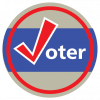Performance Measures, Grant Application and Follow-up Report Forms


Hello,
I am new to Foundant and I am interested in learning how other foundations structure their application and final report questions pertaining to results/performance measures to facilitate ease of grant monitoring and evaluation. I am wondering how best to structure application questions and final report follow up form questions to facilitate data export and analysis of performance measures, including comparison of anticipated results to actual results. I am curious if anyone's application or report follow up form uses question branching (or another strategy) to require applicants and grantees to provide performance measures individually (as opposed to multiple performance measures included in a single text box) or to list performance measures separately from targets (on the application) and actual results (on the report), so as to provide for separate fields for each measure and either the target or actual result. I would love to hear from others on what has worked best for you.
Comments
-
I was wondering the same thing as I am in the process of developing our grant applications. We just have the Standard license for GLM so we do not have branching capability.
I am putting in questions specific to #of persons to be served, geographic areas of service, and type of population served (children/youth/adult etc.)
I have specific questions for goal, objectives and outcomes, but those are more text than integer based.
I was told that I can move/share questions forward to the report forms so we/they can see the target and then add in the actual.
I'd love to hear what others are doing.
Bettie Stammerjohn
Executive Director
Community Foundation of Greene County, Pennsylvania
3 -
Jessica,
There's a lot to unpack in these questions, and I know that I don't have most of the answers. However, in order to help move the conversation forward (and to practice being vulnerable) I'm attaching copies of one of our general applications and follow-up forms. Perhaps these might help you? Maybe others can suggest improvements as well. We currently don't separate out the various outcomes (or performance measurements), so this might not be what you're looking for.
FWIW, I'm thinking about dropping outcomes altogether. (While I've only talked to a handful of other program officers about this, it doesn't seem like there are others doing this!) My reason is that we are asking nonprofits to measure things they can't. For example, a youth program can't actually track whether or not their students graduate from high school. A sexual assault program can't actually track how many assaults they prevented. And really, how many of these programs work in isolation? Is the scouting program the only way that at-risk youth are going to succeed in life? Surely the other programs and the entire K-12 system doesn't have any say in the youths' success, right? I think nonprofits can measure only so much. So, let's ask them about their outputs -- how many contact hours they provide, how many trainings, how many meals served, etc. We have that data that says if you engage people in certain ways, they are more likely to create certain types of outcomes. So, let's measure up what the agencies are actually doing and stop asking them to predict the future or measure things that they can't.
I know, I don't mean to change the nature of your question. Just putting it out there for food for thought. (I do love food! Is there a badge in Compass for food lovers and foodies?)
Good luck!
Tom
11 -
Tom,
Thank you very much for your comment and for sharing your thoughts, application and report form - all are much appreciated. I agree with your comments around outcomes. We are using Results-Based Accountability at our foundation and this is helping us and our grantees to focus on things we can track (in many cases outputs). Our grantees' performance measures tend to be number of clients served - sometimes by a client characteristic (How much did we do?); a client satisfaction measure (How well did we do it?); and measures around changes in knowledge, attitudes, beliefs, behavior, circumstance (Is anyone better off?).
I really like your Applicant Feedback section on your application form. Three great questions. And also, I love food too! So, thank you again for sharing!
Best regards,
Jessica
1 -
This is a decent meal option. Agreeing with Tom on a lot of his thoughts. The last few years we have been getting away from tedious applications and final reports that basically tell us what we want to hear, and which we really didn't use. We prefer no more information on applications and final reports than that which will allow us to make responsible funding decisions.
Without realizing it had a name, we started moving toward putting ourselves in our grantees' shoes: simplifying applications and final reports with just enough meat, less cotton candy (even accept applications sent to other funders so they don't have to fill out two separate applications). Later realized there was already a movement in motion which you're probably already aware of called "Trust Based Philanthropy." Fits the direction we're moving in. Not there yet, but it's a fun journey building more meaningful relationships and coming alongside our nonprofit community rather than having them humbly approaching our throne. :o) Here's just a couple of quick resources for more munching . . .
8 -
Thank you for sharing your thoughts and links.
0 -
Great thoughts. I was 'raised' in the Community Action Agency world of Results Oriented Management and Accountability (ROMA) process - a long time ago. It is/was a good process, albiet cumbersome. BUT, even as the lead grant writer and program evaluator for our agency, I asked those same questions / thoughts @TomWickersham raised.
As a grantmaker, I find that most of my nonprofits have little understanding of what an outcome really is - and frequently confuse them with outputs. Between that and the issues raised by Tom, I've essentially reduced my expectation of outcomes which I know are impossible for most programs that are getting funding for a year and lack the capacity (as most nonprofits) to track beyond that program year.
However, I also want my nonprofits to strive for excellence in their programs and find ways to look at how their program(s) make a difference or an impact on the lives (even one life) of their participants/clients. I want them to be able to answer the questions why do we do what we do? why do we need money to do what we do? and to think about their impact.
I've seen too many fall into a pattern of continuing to do a program just because, well, its what we do. And it's not because they are not making an impact; it's because they become so focused on the mechanics of a project, or the day to day operations, that they forget the why, they don't look at the why or the impact.
So like @jessicamace , when I say performance measures - I'm really looking at performance measures that can measure the outputs for this time and place of the project.
@RandMorgan - I am definitely going to take a look at your link. Since I've got to get my applications on line sooner than later, their recommendations and suggestions may become food for thought for next year,
Years ago, I used the Project Streamline process (now part of Peak Grantmaking https://www.peakgrantmaking.org/insights/project-streamline-whered-come/ ) to guide my grant applications. But I am changing some things up now that I have the online GLM process.
So that's a lot to say I think we are all on the same wave length.
Thank you @TomWickersham for sharing your application and report form. I had added a applicant feedback to our applications, and my change some wording. I also liked your questions for a fiscal sponsor.
Thanks everyone.
Bettie Stammerjohn
Executive Director
Community Foundation of Greene County, Pennsylvania
7 -
Pardon my newness to grantmaking (and being vulnerable) but shouldn't we already have a good picture of what the outcomes should/could be when we approve the grant? Am I naïve? When I look at a request, I want a sense of what they will attempt to accomplish and how … and my questions and their answers had better line up to draw that picture, or there will be more questions and answers. The resulting progress (follow-up) reporting - we ask for interim(s) and final - share the original Goals the grantee said they felt they could accomplish so they can respond to how that goal is Progressing.
For example -
Goal 1: Obtain funds by July 1 to match to build playground
Progress and Lessons Learned: Funds raised to date exceed the need; excess is placed in reserve. Learned the following....
IMHO it's important to talk with the grantee before/during/after the approval process so that they understand what you need to see when they complete their follow-ups. I am also available while they are completing those. AND right now while I still have the time, I always ask a question - even if the report is great.
I'm vegetarian, so this is my loaded-pasta response :)
I welcome your feedback!!
heidi
5 -
I fully agree.
That's why I've included those (outcomes) in our application - and we'll be able to share it in the report side so they can see what they said they would do. And why I included examples of objectives and outcomes and links to a resource for more information.
Most of our grants are small, but we still want to see some kind of impact. It doesn't take a big grant to have a big impact if a project is done thoughtfully. Like you said, @HeidiFindlay that often involves conversation before the application and during the project.
Bettie Stammerjohn
Executive Director
Community Foundation of Greene County, Pennsylvania
3 -
We have an Impact Dashboard that we complete using information that grantees submit in their Final Status Report/Follow Up.
It is linked here: https://marillacmissionfund.org/application/files/5716/6386/6876/MMF_Impact_Dashboard_FY21_FINAL.pdf. We have a report in GLM that pulls in the relevant fields from the Follow Up form and I export it to CSV and build pivot tables/charts in Google Sheets.
2










